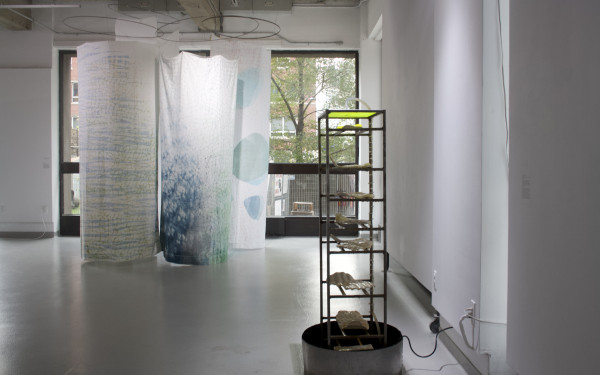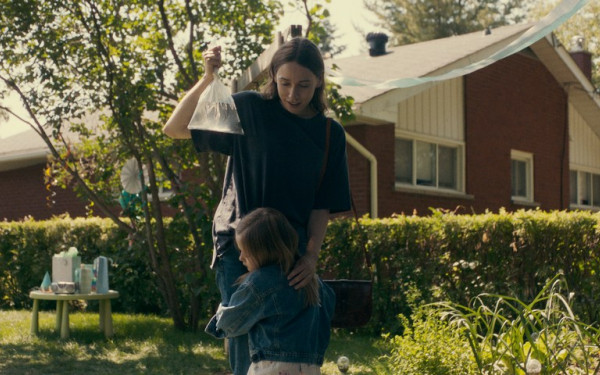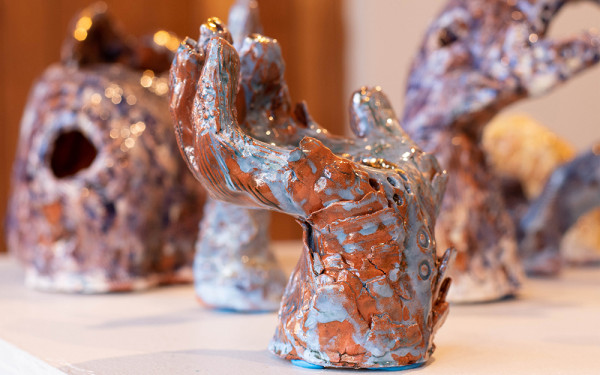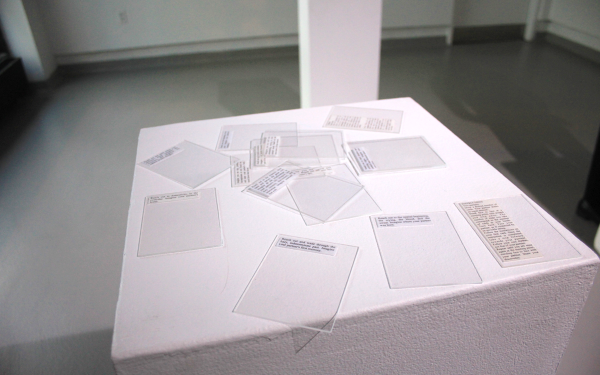Curatorial Collective Antes Makes Their Own Space Outside of Concordia
They Present Their Second Show ‘Foveal Centralis’ All About Aesthetics
Alexia McKindsey and Jose Garcia feel lucky to have been involved in the Concordia student art scene—they have both been curators at Art Matters, an undergrad-run art festival; McKindsey is an incoming coordinator at the student gallery, while Garcia just concluded his mandate in the role.
“Once we did that,” said Garcia, “we brought it outside of Concordia, which is very important.”
“You can’t stay within the institution,” he added, “because you also want artists to have their own careers after they graduate.”
After having acquired the tools at Concordia, the duo, co-founders of the curatorial collective Antes, now feels it is their responsibility to provide a platform for painters.
“Being a painter within the context of Concordia, there is not a lot of opportunities out there to exhibit,” said McKindsey. She added that the contemporary art world is moving out of the more traditional fine art practices.
RelatedFoveal Centralis is the curatorial collective’s second show. Their first one was co-hosted with For the Sake of Analog, a photography-based collective. Between June 11 and 15, Antes brought together the works of three Concordia students and two alumni, at the Atelier Galerie 2112 on Amherst St.
“We thought that for this show, the best qualities of it would be the visuals and aesthetics,” said Garcia, “and how the works relate to each other purely through that.”
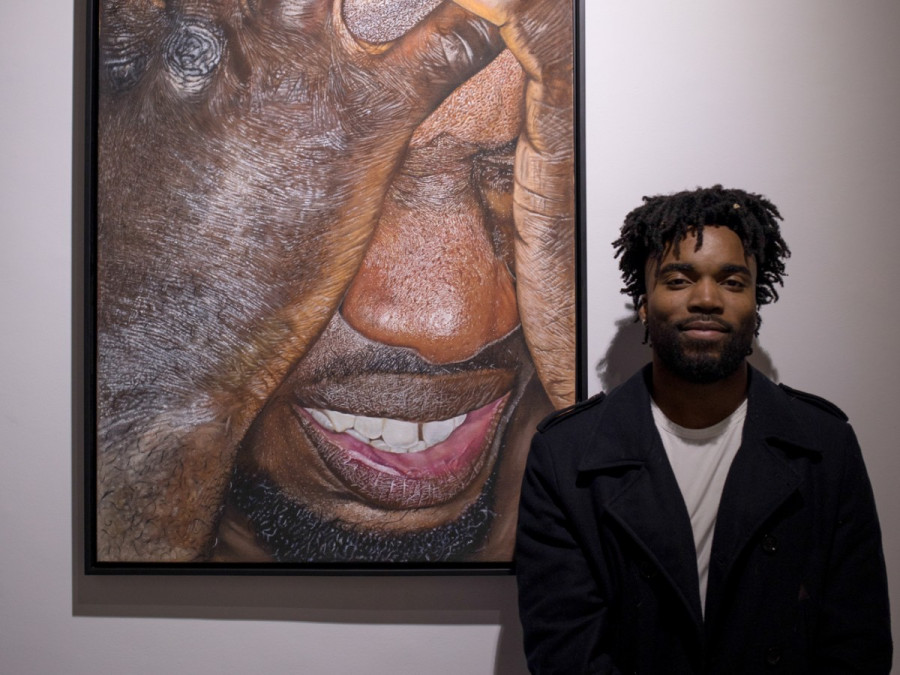
“It’s so strong individually that when it’s put together it accentuates everything even more.”
It was the first time Daniel Itiose had exhibited the same piece twice, and all within a year. Last November, as part of the VAV Gallery’s Black History Month exhibition, Itiose debuted Catharsis and Oculus.
Itiose paints in the hyperrealism style, producing painfully life-like works. He puts down on canvas his subjects exactly as they are, without retouching or embellishing.
“I want to capture things as naked as they are and as bland as they are,” said Itiose in November. “I want to capture everything. I want to just capture you as pure as you are.”
RelatedThe same subject, Itiose’s roommate and friend, posed for both pieces. Garcia noticed that a common thread between the artists in this show was using people close to them as models. “Because you also have much more control, and the painting really belongs to you.”
Garcia added that Constantinos Giannoussis, also exhibiting in Foveal Centralis used himself as a model for his work, and that it is a way to study himself and how things around him present themselves.
“Especially desires, there are a lot of sexual connotations, anxiety,” Garcia said. “It’s always trying to find answers to his life. I think it’s very insightful, I think it’s quite deep actually, it centers on the self but it presents enough visuals for you to dive into the painting and be interested in what’s going on.”
“I had to walk up to it right away, because her choice of colours and the way everything bounces off, it was just so perfectly placed.” — Daniel Itiose
Laurence Thériault-Lainé showcased two paintings, one of which, L’Entrée vers un Jardin d’Éden, she just completed.
“It’s a different approach for her,” said McKindsey, “and she really stepped outside of her comfort zone and she mastered that painting so incredibly well.”
RelatedWalking into the gallery to drop off his paintings, Itiose was also drawn to Thériault-Lainé’s latest, which greets the viewer at the door.
“I had to walk up to it right away, because her choice of colours and the way everything bounces off, it was just so perfectly placed.”
“If it was wrongfully done it would’ve come off as too cluttered, but for some reason there was just enough breathing room for you to embrace the work,” he continued. “And the flowers were put in the right spot, and the reflection in the mirror, and everything about it—that was a well executed painting.”
In her practice, Thériault-Lainé draws from art history, a passion of hers. The Renaissance current mannerism makes an appearance in her pieces, for its vibrant colours and the symmetric compositions.
“I feel like any type of painting, no matter what,” said Garcia, “as long as it brings you somewhere else than surface value, it adds something special to your day, that you were completely unaware that it existed.”

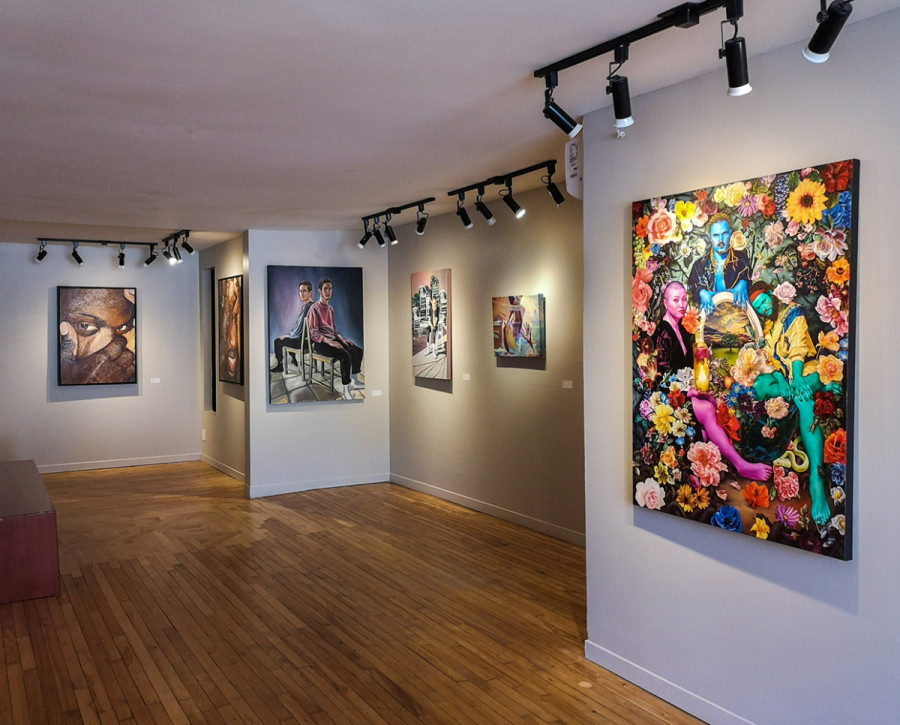
_600_832_s.png)

